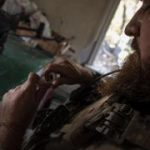43 people, most of them children, have died from dengue in Bolivia and more than 13,000 have been infected so far this year, especially in the tropical department of Santa Cruz (east), where the epidemic outbreak has once again put the naked the precariousness of the health system, raising claims from doctors and the population because they feel abandoned by the authorities.
In the city of Santa Cruz there is an ongoing health emergency with hospitals collapsed, fumigation is being carried out in some streets, houses and schools in suburban neighborhoods, “mingas” or community cleaning work is also carried out and there are mothers who pray at the doors from emergency centers for the recovery of their children.
According to the report of the Ministry of Health as of March 8, the number of deaths from dengue has risen to 43 and the cases add up to 13,470, of which close to 10,000 are in Santa Cruz, the most populated and economically strong region of the country, but whose health system is precarious with a deficit of hospital beds, equipment and 14,000 workers, according to doctors.
Some neighborhoods in Santa Cruz participated over the weekend in a collective cleaning day to eliminate disused containers, bottles and tires from the houses where the water used by the dengue-transmitting mosquito, the Aedes aegyptito reproduce.
Isabel Montenegro, 35, lives in District 12 and has cleaned the patio of her house and her street with her family and neighbors as part of the “minga” against dengue fever organized by the Santa Cruz mayor’s office, which has mobilized your staff and heavy equipment to remove tons of trash.
Her son Jared recently contracted dengue fever and had problems getting medical care.
“She gave it to my nine-year-old son three weeks ago. Seven days he was delicate and the hospitals were super saturated. I have insurance, but it was full, full. The doctor told me ‘I’ll give him IVs, but here sitting down,’ Isabel recalls, about that moment when her little one couldn’t be hospitalized properly, but she saved her life, ‘thank God’.

“I thought that I no longer counted it. I said this is the first time I have had a lethal disease and I decided to take care of myself a little more”, adds the boy.
Dengue is endemic to Santa Cruz, but Isabel believes that this year “it is attacking children more” because they have suffered from Covid-19 and have been left with sequelae and low defenses.
According to historical statistics, the worst epidemic outbreaks occurred in 2009 with almost 61,000 cases, and in 2020 with more than 110,000, although then the figure receded into the background amid the data released by the Covid 19 pandemic.
“Our children are dying for lack of help”
For the main leader of the health workers of Santa Cruz, the doctor Ruth Aguilera, the “epidemic shows the constant collapse of the health system” and the authorities of the central government, the opposition government and the government-affiliated mayor’s office are the responsible.
“The complicity belongs to all politicians. They forgot to such an extent about health, that we became collapsed and they just found out”, criticizes the professional, emphasizing that in other countries the responsibilities with the consequence of deaths due to negligence are paid with jail.
“Our children are dying for lack of help. In dengue as a disease, if this had happened in another part of the world where a health system was not collapsed, there would not have been so much mortality ”, he adds.
In case of delayed care due to the infection, severe or hemorrhagic dengue can kill in 48 or 72 hours, according to experts.

At the Children’s Hospital, the hospitalization rooms are full and several minors are cared for on improvised stretchers in the corridors, while at the doors of that hospital the mothers comfort each other and say rosaries, as could be seen over the weekend when with tears they repeated the names of their children before an improvised altar with religious images.
In the midst of requests for healing, ambulances continue to arrive at the same center with children on stretchers, causing debates among doctors about where they can be transferred.
To respond to the collapse, the Government installed on February 23, in a suburban area, the Mobile Hospital Against Dengue, which from then until the weekend had attended more than 14,500 general consultations inside and outside its facilities, including of which 700 were due to dengue, according to its manager, the doctor José Llerena.
The field hospital with tents was donated by the United States and is attended by a Bolivian medical staff with 90 workers.
In this place, some children still hospitalized were recovered, according to their mothers, grateful to have an option in the face of the difficulties that other centers are going through.
“The country is the one that is suffering”
Laura Peña, whose 27-year-old cousin was admitted to one of the tents, said that they arrived with difficulty because “not all the neighbors knew where that care center was.”
“But what most strikes us is that the authorities are fighting among themselves when in reality the country is the one that is suffering and especially this city with dengue,” Peña said, reflecting a common criticism in that capital.
He criticized the fact that the Mayor’s Office has not cleaned the boulevards or promenades because many are full of tall weeds next to holes where water accumulates, and the Governor’s Office because there is only one Children’s Hospital. “Unfortunately, the authorities were postponed,” he insisted.

In the midst of the health emergency, the confrontations have a political nuance. The Minister of Health, Jayson Auza, is facing the Governor, whose head, Luis Fernando Camacho, has been detained in La Paz since the end of 2022 accused of having been part of an alleged coup plan against Evo Morales in 2019.
The mayor of the city, Johnny Fernández, has participated in some “mingas” in person, but is questioned by the Governor’s Office and by residents who claim these are improvised actions and that their neighborhoods were not attended to in the cleaning tasks.
The city of Santa Cruz is the largest and most developed in Bolivia, but in the midst of political polarization nothing seems to be enough to face the wave of dengue that continues adding victims.







![[Img #74683]](https://thelatestnews.world/wp-content/uploads/2024/12/The-main-mistakes-to-avoid-when-betting-on-electronic-sports-150x150.jpg)






